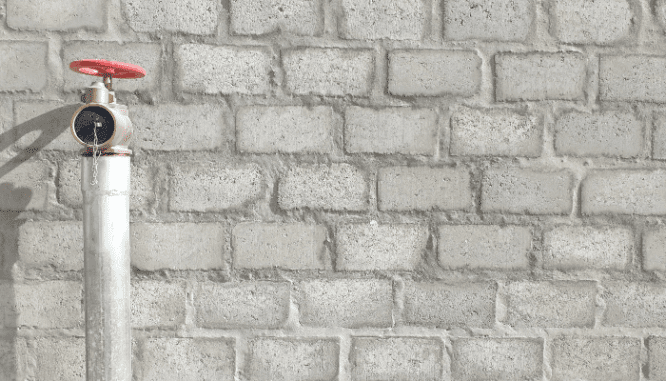Be Prepared: A Homebuyer’s Inspection Checklist
- Published on
- 8 min read
-
 Melissa Holtje Contributing AuthorClose
Melissa Holtje Contributing AuthorClose Melissa Holtje Contributing Author
Melissa Holtje Contributing AuthorMelissa enjoys using her experience as a house flipper, investment buyer, and waterfront home owner to help buyers and sellers thrive in the housing market. When not scouting real estate, you’ll most likely find her at the beach.
At HomeLight, our vision is a world where every real estate transaction is simple, certain, and satisfying. Therefore, we promote strict editorial integrity in each of our posts.
You’ve found your dream home, you’ve made an offer, and your offer has been accepted! That in itself feels like cause for celebration! But don’t break out the champagne and cake just yet. There’s still a major hurdle to overcome in your homebuying process: the home inspection. And to follow along, you’re going to want a home inspection checklist specific to you as a buyer.
A home inspection is much more than a mere formality. A professional inspection helps to verify that your new home is in good shape before you purchase it. An inspection is the key to uncovering any damage or defects, so you want to be as thorough as possible.
Cesi Pagano, a real estate agent with over 30 years of experience in Orange County, California, has guided her clients through thousands of home inspections. With her help, we’ve created an inspection overview –– and a detailed corresponding printable list –– so you can be prepared for every scenario.
What is a home inspection?
A home inspection is a close look at the house’s details, conducted by a trained professional. The inspector goes through a house room by room and step by step to document any issues or needed repairs.
An inspection is a standard part of most real estate contracts. Often there’s an inspection contingency that allows a buyer to back out of the purchase (within a specified time window) if they feel uncomfortable with the results of the inspection.
Usually the buyer and the buyer’s real estate agent can be present for the home inspection. This can be a great time to ask the inspector any questions about the home as they see it.
To be perfectly clear, a home inspection is not an appraisal. An inspector is looking for measures of livability and safety. An appraiser is assessing the home’s value. For example, if the kitchen cabinets are in excellent working order, the inspector will make no negative inspection notes because there’s nothing functionally wrong with them. But if those same functional kitchen cabinets are dated and ugly, then the appraiser will make an adjustment to the overall home value to reflect their age.

How do you hire a home inspector?
When looking for a home inspector, your real estate agent can be a great resource.
Pagano says, “We ask the buyers if they have somebody in mind, or if they don’t we recommend somebody to them. Often we offer a couple of inspectors for them to interview and then pick one.”
You can also ask for referrals from people you know. Read reviews and ask what kind of training or certification the inspector has. Some states license and regulate home inspectors, others don’t, so you’ll want to make sure you’re researching your potential inspectors either way.
On average, the cost for a home inspection is $328, but that fee varies based on the location and size of the home. There may also be additional fees for specialized inspections. For example, in hurricane-prone areas, a wind mitigation inspection (an inspection that assesses storm-readiness) will add another $75 to $100 to the inspection price.
What do home inspectors look at when doing an inspection?
Home inspectors should look at the home’s interior and exterior, including attic spaces, basements, crawl spaces, and roofs.
Homebuyers can tag along in every space that they feel comfortable. This is your chance to put eyes on the areas that you couldn’t reasonably access prior to making an offer.
Inspecting inside the home
Foundation
Starting from the ground up, the inspector will take a look at the foundation, including its material (concrete or cinder block, usually) and condition. They’ll note whether there’s a slab foundation or if there’s a basement or crawl space with access to the plumbing.
Then they’ll start checking specific components. Cracks or shifting walls could indicate that the foundation has not settled properly. Other red flags may include broken floor joists, dry rot, mold or fungus, water intrusion, and evidence of pests.
In a crawl space, there should be a vapor barrier over the ground. Any visible ductwork, wiring, and plumbing should also be inspected for integrity.
Systems
The inspector will take a look at the heating and cooling system, including the indoor and outdoor units. They’ll note the serial and model numbers and do a visual inspection for rust or broken parts. Using the thermostat, they’ll test the heat (including the emergency heat) and air conditioning functions. Some inspectors may also note the number and placement of vents (supply and return) for efficiency purposes, and they may check air filters for cleanliness.
The hot water system should also be inspected. The age and functionality of the water heater(s) are the main objectives. The inspector should note the serial and model numbers of each water heater and visually examine it for leaks, rust, and insulation. Sometimes an inspector will take a temperature reading after letting hot water run from the tap.
For the electrical system, the inspector will look at the electrical service coming into the home and the electrical panel within the home. Overhead or underground service will be noted, as will the security of the meter and main service disconnect. The panel will be assessed for safety and damage, and voltage requirements will be taken into account. The inspector may also test the grounding and ensure that the breakers trip correctly.
Safety systems will also be inspected. Smoke and carbon monoxide detectors should be in the proper places. They should be in good working order and up to date. If there’s a security system on the property, the inspector may ask the seller for the ability to test it.
Floors
When inspectors look at the floors, they’re looking at overall condition. Any slopes or unstable points are of greatest concern, but they’ll also take note of the finishes, too.
Any ripped carpet, broken tile, or damaged wood should be noted for buyers, as far as safety and livability concerns go.
Walls and ceilings
On walls and ceilings, inspectors will look for water stains, mold, peeling paint, cracking, and any holes larger than one inch. These problems could be symptoms of a larger issue, such as a roof leak or foundation shift. Trim and baseboards will also be inspected for breakage or damage.
Lights and outlets
The inspector will spend time flipping on switches in all rooms, making sure lights, fans, and outlets are all in working order. They’ll note whether outlets are two-prong or three-prong, and they’ll ensure that outlets are ground fault circuit protected (GFI or GFCI outlets) in bathrooms and kitchens.
However, sometimes the inspector will only spot-check the outlets. As a buyer, you may want to send a friend or family member around to test all outlets; plugging in a night light will do the trick.
Windows and doors
All windows and doors should open, close, and lock easily. Windows should not stick, and there should be no water staining or rot on the sills. The edges should be well-sealed and not drafty.
In some areas, buyers will want to take note of any impact rating listed on the window frame for insurance purposes. Some inspectors may also note the absence of screens or window coverings.
Interior doors should not stick in the jamb or rub against the floor. If there’s a key lock, the key should be available for the buyer. And of course, any damage or breakage of windows and doors should always be noted.
Stairs
When inspecting staircases, inspectors are looking for structural integrity and overall safety. The steps, the supports (if possible to see underneath), the railings, and the spindles should all be examined for soundness. If there’s any breakage, rot, or instability, it should be noted on the inspection.
Kitchen
In the kitchen, the inspector will look for proper functionality of all cabinets and drawers. The hinges and rails should be secure and allow doors and drawers to move easily. The wood and laminate should be in good shape, and there should be no evidence of pests.
The counters should be free of damage and should be secured properly to the cabinets. Caulking around the sink and other edges needs to be in good shape as well. Likewise, the backsplash –– whether it’s a small continuation of the countertop or a material that runs up the wall –– should not have any installation defects.
All appliances, including the oven, stove, hood, refrigerator, microwave, garbage disposal, and dishwasher, should be tested for usability. The inspector will turn on every appliance and make sure all the components work. They may also check for cleanliness and an absence of odors.
For hot appliances, safety checks (such as the tip guard for ovens) take priority. For water appliances, proper flow should be determined, and everything should be free of leaks. Don’t forget the ice maker, if there is one!
The kitchen sink should also be tested for appropriate pressure, no leaks, and proper drainage. The inspector will ensure that the shutoff valves are working and that there’s no moisture in the sink cabinet.
Bathrooms
In the bathrooms, similar rules apply for cabinets, drawers, sinks, and counters. Again, the inspector is there to make sure there’s no damage and that everything works the way it’s supposed to.
In addition, the inspector will look at toilets, tubs, and showers. All toilets should flush easily; any kind of bubbling or slow flushing could indicate a blockage in the sewer line.
Toilets must also be sturdy in construction and secured to the floor. Tub and shower faucets should have good flow and no leaks. The edges should be caulked and grouted well, and the drain should flow easily without backup.
Finally, there should be a properly installed vent fan present in each bathroom to avoid moisture damage.
Attic
Up in the attic, the inspector is going to look at the underside of the roof. The rafters, joists, trusses, and decking of the roof will need a visual inspection for water damage, dry rot, and proper spacing. Buyers in some areas will want to take note of the type of fasteners as well (for insurance purposes). Any staining or fungus should be assessed for age and re-examined on the outside. Eaves should be properly vented to let hot air escape.
The attic’s system components should also be inspected. Any wiring, plumbing, or ductwork that runs through the attic should be in good shape. Spliced wires are a potential hazard, and broken ducts limit the HVAC’s efficiency. The inspector will also check the quality of the insulation and make sure that kitchen and bathroom fans vent to the outside.

Inspecting the outside of the home
Exterior walls
The walls on the outside of the home should be inspected just as thoroughly as the inside. Siding should be intact and have correct clearance from the ground (usually at least six feet). Brick and stucco should be free of cracks. Any peeling paint should be noted, since it could be an indicator of water damage.
Windows and doors
Windows and doors should be examined from the outside as well. Damage –– such as rot, cracked seals, and peeling paint –– around the panes or jambs should be noted by the inspector. Good weather stripping should be present to help with energy efficiency.
Lot grading
Inspectors will want to check that the lot slopes away from the house to avoid water damage to the foundation. Any erosion or standing water are red flags, both close to the house and throughout the yard. Good water drainage is important, especially during inclement weather.
Trees and shrubbery
Any trees should be well-trimmed and situated at least eight to ten feet away from the foundation. Shrubs and vines should be cut away from the home’s exterior to help safeguard against damage and pests. The inspector will look at the health of the trees and shrubs and note any possible dangers to the home. For example: Are trees growing too close to the foundation?
Driveways, walkways, and decks
The inspector will check driveways and walkways for cracks or uneven surfaces that could present a hazard to occupants. Likewise, weakened or unstable decks and porches are not safe for a buyer. Every outside surface should be sloped away from the house to prevent water intrusion. All steps and handrails should be checked for safety as well.
Fences
Fences should be level, stable, and in good condition overall. Any leaning, wobbling, or loose materials should be noted by the inspector.
Roof
The inspector will look at the roof for any damage to the materials. Shingles and tiles shouldn’t be missing or broken. Metal roofs should be rust-free; wood roofs should be decay-free. Any mold or fungus should be noted, as it adds wear to any material.
Gutters and downspouts should be clear and secure. Flashing around all joints and protrusions should be in good shape. Does there seem to be any storm damage, or has the roof aged beyond its normal timeline? If any areas in the attic seemed questionable, this is the time to examine the roof’s quality from the outside.
Since the roof is one of the biggest expenses on a home, Pagano usually recommends a professional roof inspection in addition to the home inspection. She says that a home inspector may sometimes use a drone to do their inspection, while a roof inspector will get up on the roof to inspect it more closely.
Garage
In the garage, the inspector will look for any water seepage and foundation cracks. They should also check that the garage door operates smoothly and that the auto-reverse safety feature is intact. Some buyers will want to look for an impact rating on the garage door, for insurance purposes.

What questions should I ask?
During an inspection you should ask any questions that help you feel more confident in your home purchase. If there’s anything that seems unusual, ask your inspector to comment.
Your real estate agent can also ask the seller for service records and a seller’s disclosure prior to the inspection. If you have any questions about these documents, the inspector may be able to help. You may also want to ask about whether the seller has kept service records for major systems and appliances.
In addition, you should ask your home inspector if they recommend any additional, specialized inspections, including structural, pest, mold, septic, soil, seawall, or pool/spa inspections.
What’s not included in a home inspection?
A basic home inspection only goes so far. For instance, a regular home inspection will not look inside your plumbing pipes. But if your inspector finds an issue with backed-up tub drains, you could call a plumbing inspector with snake cameras for a more thorough inspection.
Remember that inspectors are looking for tell-tale signs of problems. More in-depth analysis could require additional inspections to truly diagnose problems and recommend solutions. Home inspections are limited in their scope.
Pagano says,
“A home inspector is like a general practitioner. If you’re not feeling well and you go to the doctor, they’ll check you out. But if they find that it’s your heart, then they’ll send you to a cardiac specialist.”
Home inspectors function the same way –– if they find a problem, they may refer you to a specialist.
What happens after the home inspection?
After the inspection, you’ll receive a detailed report. Often, this document is quite extensive, with pages and pages of checklists and comments. There’s usually a summary page included, so you can see all the issues that the inspector found. Some might be as simple as a broken outlet cover; others could be as serious as an overloaded electrical panel.
Once you receive your inspection report, you should take the opportunity to talk to your real estate agent about the results.
Pagano says, “We review the inspection with the buyer to see if there’s any other components of the home they want to investigate further.”
Depending on the type of sale, your agent might be able to negotiate with the seller regarding points of the inspection. Sometimes the seller is willing to fix the issues or offer cash at closing to compensate for repairs. And of course, there’s always an option to back out of the purchase if you and the seller can’t come to an agreement.
Remember, the home inspection is one of the best tools that a buyer has to make sure that their home purchase goes smoothly. So take each point seriously! If all goes well, then by all means, break out that champagne and cake!
Header Image Source: (Theera Disayarat / Shutterstock)
